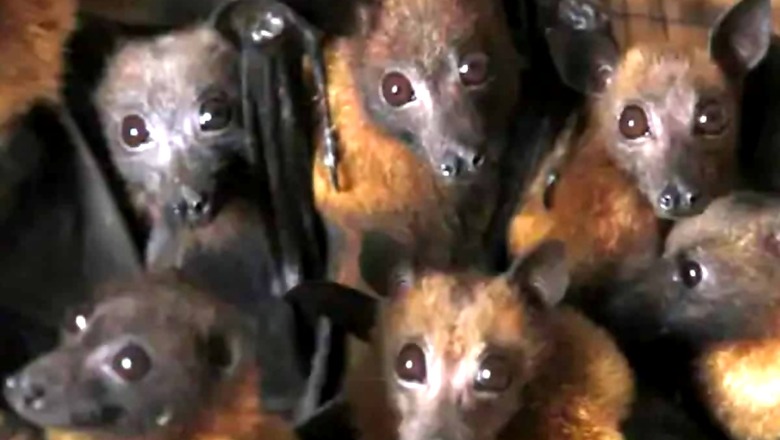
views
The lineage that gave rise to the novel coronavirus diverged from the most closely related bat viruses about 40 to 70 years ago, according to a new study which sheds light on the origin of the viral strain behind the COVID-19 pandemic. The findings, published in the journal Nature Microbiology, suggest that the novel coronavirus, SARS-CoV-2, is likely to have evolved from its most closely related bat viruses decades ago.
According to the researchers, including those from the Pennsylvania State University in the US, understanding the evolutionary history of SARS-CoV-2 has been difficult since coronaviruses are known to exchange genetic material between different viruses. Due to this recombination process, they said small genomic subregions of the virus may have different ancestries.
Earlier studies had identified the bat virus RaTG13 as the most closely related virus to SARS-CoV-2, suggesting that a bat origin for the COVID-19 outbreak is likely. However, scientists also identified similar coronaviruses in pangolins, suggesting that the scaly-skinned mammals may have been an intermediary host.
In the current study, Maciej Boni and his colleagues analysed the evolutionary history of SARS-CoV-2 using genomic data on sarbecoviruses — the subgenus to which SARS-CoV-2 belongs. They employed three approaches to identify regions in the virus' genome that had not undergone recombination, and could be used to reconstruct its evolution.
According to the scientists, the approaches suggest that RaTG13 and SARS-CoV-2 share a single ancestral lineage. They estimated that SARS-CoV-2 genetically diverged from related bat sarbecoviruses in 1948, 1969, and 1982, respectively.
The researchers also examined the genetic sequence that helped the virus make the receptor-binding domain (RBD) spike protein, which it uses to enter human cells. Previous research had shown this protein to be more similar to pangolin viruses than RaTG13.
However, the current study found that the spike protein did not show evidence of recombination taking place between the lineage leading to SARS-CoV-2 and other known sarbecoviruses. Based on this finding, the scientists suggested that this protein and its RBD are an ancestral trait of the lineage leading to SARS-CoV-2, RaTG13, and the pangolin strain discovered in 2019.
According to the researchers, while SARS-CoV-2 and pangolin viruses share a common ancestor, and although the scaly mammals may have played a role in the transmission of the virus to humans, they are unlikely to be an intermediate host for the virus. They said the long divergence period of SARS-CoV-2 indicates there may be as-of-yet unsampled virus lineages in bats that may have zoonotic potential due to the ancestral position of human-adapted contact residues on the SARS-CoV-2 RBD.
But, they added that better sampling of bats for viruses is needed to assess this. The researchers concluded that the existing diversity and the dynamic process of recombination amongst lineages in the bat reservoir demonstrate how difficult it will be to identify viruses with the potential to cause significant human outbreaks before they emerge.
Hence the scientists highlighted the need for real-time human disease surveillance systems that can rapidly identify and classify pathogens.



















Comments
0 comment